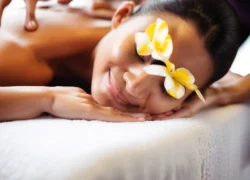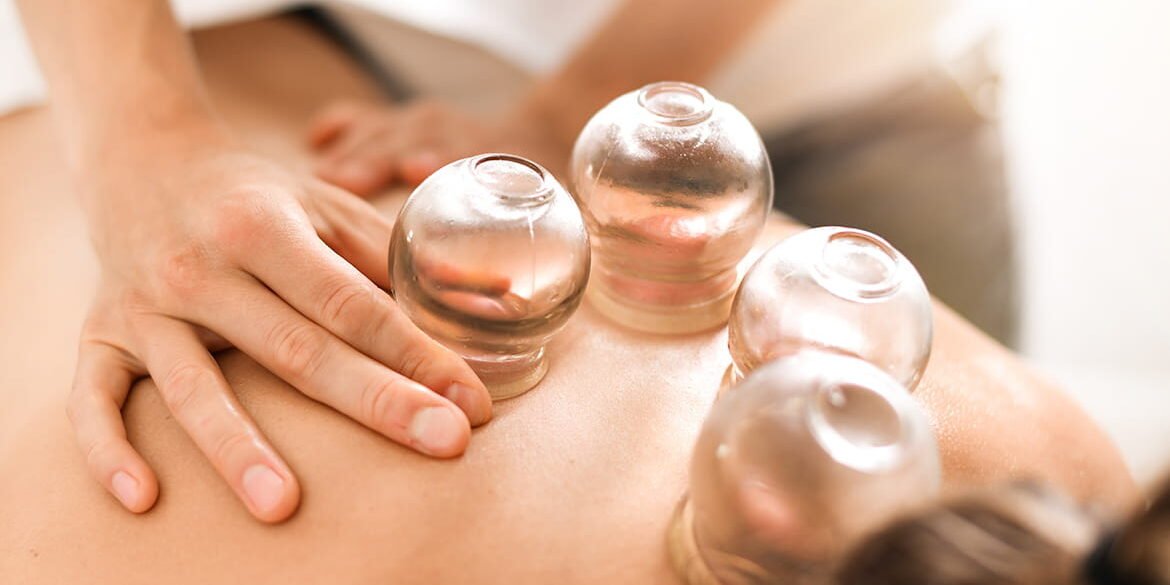Cupping is a traditional therapy that has been practiced in various cultures, most notably in traditional Chinese medicine (TCM), for thousands of years. It has gained attention and popularity in recent years, especially among athletes and celebrities, for its potential health benefits and therapeutic properties. Here’s an introduction to cupping:
What is Cupping?
Cupping is a technique where cups are placed on the skin to create a suction. The suction pulls the skin, muscle, and fascia upwards, which can increase blood flow to the treated area.
Types of Cupping:
Dry Cupping: This is the most common form, where a vacuum is created in the cup by heating the air inside or using a suction pump. No incisions are made in the skin.
Wet Cupping (or Hijama): This method involves making small incisions on the skin after the cup has been applied and then reapplying the cup to draw out a small amount of blood. This is thought to remove toxins and harmful substances from the body.
Benefits:
While more scientific research is needed to confirm the benefits of cupping, proponents and practitioners claim that it can:
- Relieve muscle tension and pain.
- Increase blood circulation.
- Reduce inflammation.
- Promote relaxation and well-being.
- Help with respiratory issues.
- Enhance the body’s natural healing processes.
Risks and Considerations:
Bruising: One of the most common side effects, the suction can cause the skin to turn reddish, bluish, or purplish for several days.
Skin Infections: Especially with wet cupping, there’s a risk of skin infections if not done under sterile conditions.
Scarring: Rare, but possible, especially with wet cupping.
Burns: If the cupping practitioner is not careful while heating the cups.
It’s crucial to find a trained and reputable practitioner if you’re considering cupping.
What is Dry Cupping:
Dry cupping is one of the primary forms of cupping therapy. Here’s a more detailed look at the practice:
Dry cupping is a process in which cups are placed on the skin to create a vacuum. Unlike wet cupping, which involves drawing blood from incisions, dry cupping solely uses suction without any bloodletting.
How Dry Cupping is Performed:
Preparation: The skin is first cleaned, and the patient is usually made to lie down, though the treatment can also be done while seated or even standing, depending on the area being treated.
Cup Placement: The practitioner selects an appropriate-sized cup based on the treatment area. Cups can be made from glass, bamboo, ceramic, silicone, or plastic.
Creating the Vacuum:
Traditional Method: The classic way involves soaking a cotton ball in alcohol, setting it alight, and then placing it inside the cup. This burning cotton ball consumes the oxygen inside the cup. When the burning ball is removed, and the cup is immediately placed on the skin, the cooling of the air inside the cup creates a vacuum.
Modern Method: Some contemporary cups come with a mechanical suction pump. The cup is placed on the skin, and the air is drawn out using the pump to create the desired suction.
Duration: Once a good seal is established, the cup is left in place for about 5-20 minutes, depending on the treatment’s intent and the patient’s comfort.
Removing the Cups: To remove a cup, the edge is gently lifted to let air in, breaking the vacuum, allowing the cup to be lifted away easily.
Post-Treatment: The treated area might be massaged with oils or balms to soothe the skin and muscles.
Potential Benefits of Dry Cupping:
Muscle Relief: The suction can help relieve muscle tension and can promote faster muscle recovery, especially after intense physical activity.
Increased Blood Flow: The treatment can enhance blood circulation in the treated area, which can aid in healing and reduce inflammation.
Stress and Pain Reduction: Many individuals find cupping to be relaxing, which can help alleviate stress. Additionally, it can act as a form of deep tissue massage and may provide pain relief.
Stimulating Energy Flow: In traditional Chinese medicine, cupping is believed to balance the Qi (pronounced “chi”) or the life force energy of the body.
Side Effects and Considerations:
Bruising: The most notable side effect of dry cupping is bruising or discoloration. The extent of bruising varies among individuals but generally fades within several days to a week.
Mild Discomfort: Some people might experience minor discomfort during or after the treatment.
Skin Sensitivity: There might be increased skin sensitivity or a sensation of heat in the treated area.
Allergies: If oils or balms are used post-treatment, ensure you’re not allergic to any ingredients.
Dry cupping is a non-invasive treatment that’s gained popularity in both traditional and modern wellness circles. As always, it’s essential to consult with a trained and reputable practitioner when considering dry cupping or any other therapeutic approach.
What is Hijama
Hijama, often referred to as “wet cupping,” is a traditional form of therapeutic bloodletting that has its roots in Islamic and Arabic traditions. The term “Hijama” is derived from the Arabic word “Hajm,” which means “sucking.” This practice is considered both a form of alternative medicine and a spiritual act of worship in some Islamic cultures.
Procedure:
Preparation: The skin is cleaned, and the patient typically lies down in a comfortable position.
Application of the Cups: Special cups (often made of glass, plastic, or silicone) are placed on the skin and a vacuum is created using either heat or suction pumps. This step is similar to dry cupping.
Making Incisions: After the cups are removed, small superficial incisions or scratches are made on the skin using a sterilized instrument.
Reapplication of the Cups: The cups are then reapplied to the same areas to draw out a small amount of blood.
Removing the Cups and Cleaning: After a short period, the cups are removed and the area is cleaned and dressed to avoid infection.
Potential Benefits:
Detoxification: Hijama is believed to remove harmful substances and toxins from the bloodstream.
Pain Relief: It can help alleviate pain, particularly headaches, back pain, and arthritis.
Improving Circulation: The practice is thought to enhance blood flow and provide relief from circulatory problems.
Balancing Body Systems: Hijama is believed to help in balancing and harmonizing the body, particularly in terms of the humoral theory, which involves balancing bodily fluids.
Spiritual Cleansing: In Islamic traditions, Hijama is thought to be a way to cleanse the body of both physical and spiritual ailments. The Prophet Muhammad is reported to have said, “Indeed in cupping (Hijama) there is a cure.” (Sahih Muslim)
Considerations and Risks:
Hygiene: It’s crucial that Hijama is practiced under sterile conditions to reduce the risk of infections.
Bruising and Scarring: There’s a risk of bruising, and in some cases, scarring may occur.
Bloodborne Diseases: If instruments are not properly sterilized, there’s a risk of transmitting diseases.
Physical Condition: Individuals with certain conditions, like blood disorders, should consult a healthcare professional before undergoing Hijama.
Qualified Practitioner: Always ensure that the person performing Hijama is trained and certified, as it requires skill to be performed safely and effectively.
Hijama, or wet cupping, has been practiced for centuries and holds both therapeutic and spiritual significance for many. If someone is considering Hijama, they should do so with proper knowledge, precautions, and always under the guidance of a certified practitioner.
hijama is not being practice in massage clinics in North Carolina.
Modern Popularity:
Cupping gained significant attention during the 2016 Rio Olympics when numerous athletes, including the renowned swimmer Michael Phelps, were seen with characteristic circular bruises on their bodies, indicating they had undergone the therapy.
Conclusion:
Cupping is an ancient practice that has survived through millennia, which suggests that many believe in its therapeutic value. As with any alternative therapy, it’s essential to be informed, to consult with professionals, and to listen to your body. Always consult a healthcare provider before starting any new treatment.







